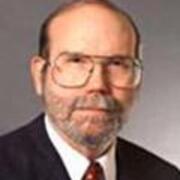Have questions about this report? Ask the author(s).
Assesses several proposals to create a new state government revenue or expenditure limit in Arizona, and compares the proposals to Colorado’s limit. Arizona already has a limit, adopted in the late 1970s, that constrains state government appropriations to a percentage of the state’s personal income.

Dennis received a B.A. in economics and mathematics from Grand Valley State University, a M.S. in economics from Michigan State University, and a Ph.D. in economics from Michigan State University in 1978. He has served on the faculty of the Department of Economics at ASU since 1979, as director of ASU’s L. William Seidman Research Institute (2004-24), and as the director of the Office of the University Economist since 2005.

After earning a B.A. in economics from the University of California at Berkeley, Tim received a M.A. in economics from the University of California at Davis and a Ph.D. in economics from Virginia Tech University in 1971. Tim was a faculty member in the ASU Department of Economics from 1970 until he retired in 2004. He began working for the predecessor of the L. William Seidman Research Institute in the 1970s and has been associated with the Institute since it was established, serving as director from 1995 through 2004.

After receiving his Bachelor of Business Administration from the University of Toledo, Tom earned his Master of Business Administration from Arizona State University in 1976. After working in the private sector, he joined ASU in 1980, working for the predecessor of the L. William Seidman Research Institute. Since 2005, he has served as manager of research initiatives in the Office of the University Economist.

This infographic estimates the total (direct, indirect and induced) economic impacts of the infusion of new dollars associated with Sun Devil Football regular season home games in 2024-25 season the…

This infographic estimates the total economic impacts of Sun Devil Athletics' 2024-25 season in the city of Tempe and Maricopa County.
Focusing on the regular seasons of 11 ticketed Sun Devil Athletics sports and two National Collegiate Hockey Conference Quarter Finals, it estimates the…

An update to the November 2023 paper that presented data through 2022, estimates are presented of the number of ASU graduates working in Arizona, as well as their average wage, aggregate wages, and tax payments. Estimates are made for each year from 2012 through 2023.